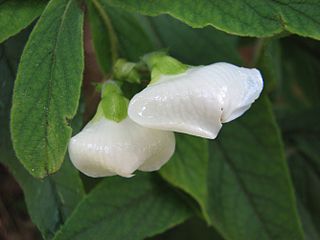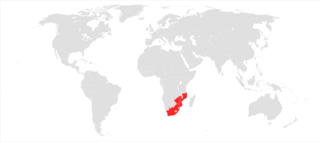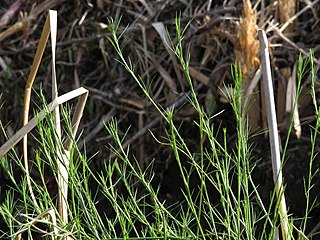
William Henry Harvey, FRS FLS was an Irish botanist and phycologist who specialised in algae.

Otto Wilhelm Sonder was a German botanist and pharmacist.

Otto Stapf FRS was an Austrian born botanist and taxonomist, the son of Joseph Stapf, who worked in the Hallstatt salt-mines. He grew up in Hallstatt and later published about the archaeological plant remains from the Late Bronze- and Iron Age mines that had been uncovered by his father.

Peter MacOwan was a British colonial botanist and teacher in South Africa.
Christian Friedrich Ecklon was a Danish botanical collector and apothecary. Ecklon is especially known for being an avid collector and researcher of plants in South Africa.

Karl Wilhelm Ludwig Pappe was a German-born physician and botanist who lived and worked in Cape Colony. He was the first person to hold the position of government botanist and the first professor of botany at the South African College. His herbarium became the oldest surviving botanical collection in South Africa.

Cotyledon tomentosa is a species of flowering plant in the family Crassulaceae, native to South Africa. It is a succulent evergreen shrub with large chunky ovate fuzzy green leaves. Its autonymous subspecies is known as the bear's paw because of the prominent "teeth" at the tips of its leaves. It forms large orange bell-shaped flowers in spring.

Henry Harold Welch Pearson was a British-born South African botanist, chiefly remembered for founding Kirstenbosch National Botanical Garden in 1913.

Bowkeria is a genus of flowering plants in the family Stilbaceae described as a genus in 1859.

Pogonarthria is a genus of African plants in the grass family.

Thaminophyllum is a genus of South African plants in the chamomile tribe within the daisy family. It is endemic to the Cape Provinces.

Aizoon secundum, the onesided galenia, is a species of flowering plant native to southern Africa, including Botswana, Namibia, and South Africa. It is naturalized in Australia, Spain, and the United States. In Spain and Australia, is considered an invasive weed threatening native vegetation.
Carpacoce is a genus of flowering plants in the family Rubiaceae. All species are endemic to the Cape Floristic Region of South Africa.

Jamesbrittenia ramosissima is a Southern African shrub in the family Scrophulariaceae occurring in the Northern Cape and southern Namibia, westward along the Gariep River from the vicinity of Augrabies Falls. It is one of some 90 species in the genus Jamesbrittenia, ranging through Africa, with 74 species occurring in Southern Africa, and 1 in India. The genus is named for James Britten (1846-1924), medical student turned botanist, and acting Keeper of Botany at the British Museum when Kuntze named it.
Maria Elizabeth Holland was a Cape Colony botanical artist and plant collector.
Felicia cana is a low and slender shrublet of up to 15 cm high, covered in white felty hairs, that is assigned to the family Asteraceae. It has alternately arranged leaves, and flower heads of about 16 mm (0.63 in) across, with 3–4 whorls of involucral bracts, and about 20 blue purple ray florets, surrounding many yellow disc florets in the centre. Very characteristic for the species are also the middle-long hairs with forked tips on the surface of its fruits. It is an endemic species that is restricted to a zone along the southern coast of the Western Cape province of South Africa.

Protea canaliculata, also known as the groove-leaf sugarbush, is a species of flowering shrub of the genus Protea, which is endemic to the Cape Provinces of South Africa.

Flora Capensis is a book that described the flora found in colonial South Africa, encompassing the Cape Colony, Kaffraria and the Colony of Natal, as it was known during the second half of the 19th century. Creating the book was suggested by the famous English botanist Sir William Jackson Hooker. William Henry Harvey and Otto Wilhelm Sonder took up the work of writing the first three volumes of the Flora Capensis, which were published between 1860 and 1865 by Hodges, Smith and Co. in Dublin, and A.S. Robertson in Cape Town. Parts 4 to 6 were edited by William Turner Thiselton-Dyer and issued over the following decades, with the supplement published in 1933.

Afroqueta capensis is the only member of Afroqueta, a monotypic genus of flowering plant. It is colloquially called Haarbossie.

Psoralea fascicularis, the large-stipule fountainbush, is a species in the pea or Fabaceae family. It is endemic to the Western Cape province of South Africa where it has been red listed as endangered (EN) by the International Union for Conservation of Nature (IUCN) Red List of Threatened Species due to its declining population.















